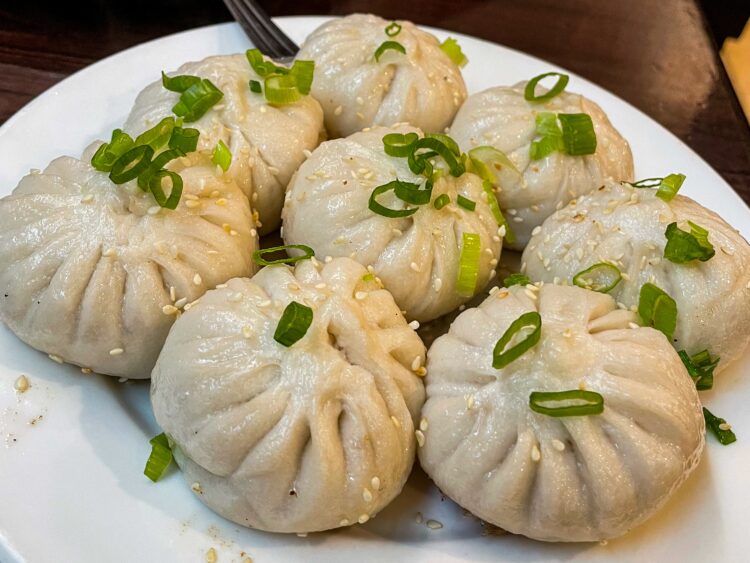What is Sheng Jian Bao?
Bao, the unmissable delight of Chinese cuisine, is hands down one of my favorite dishes, enchanting diners across China and far beyond. Its soft, fluffy dough encloses a rich, flavorful, and above all, juicy filling.
Of all the variations, Sheng Jian Bao, a Shanghai specialty, has a special place in my heart. Traditionally eaten for breakfast, it stands out for its cooking method: the buns are pan-fried first instead of being steamed.
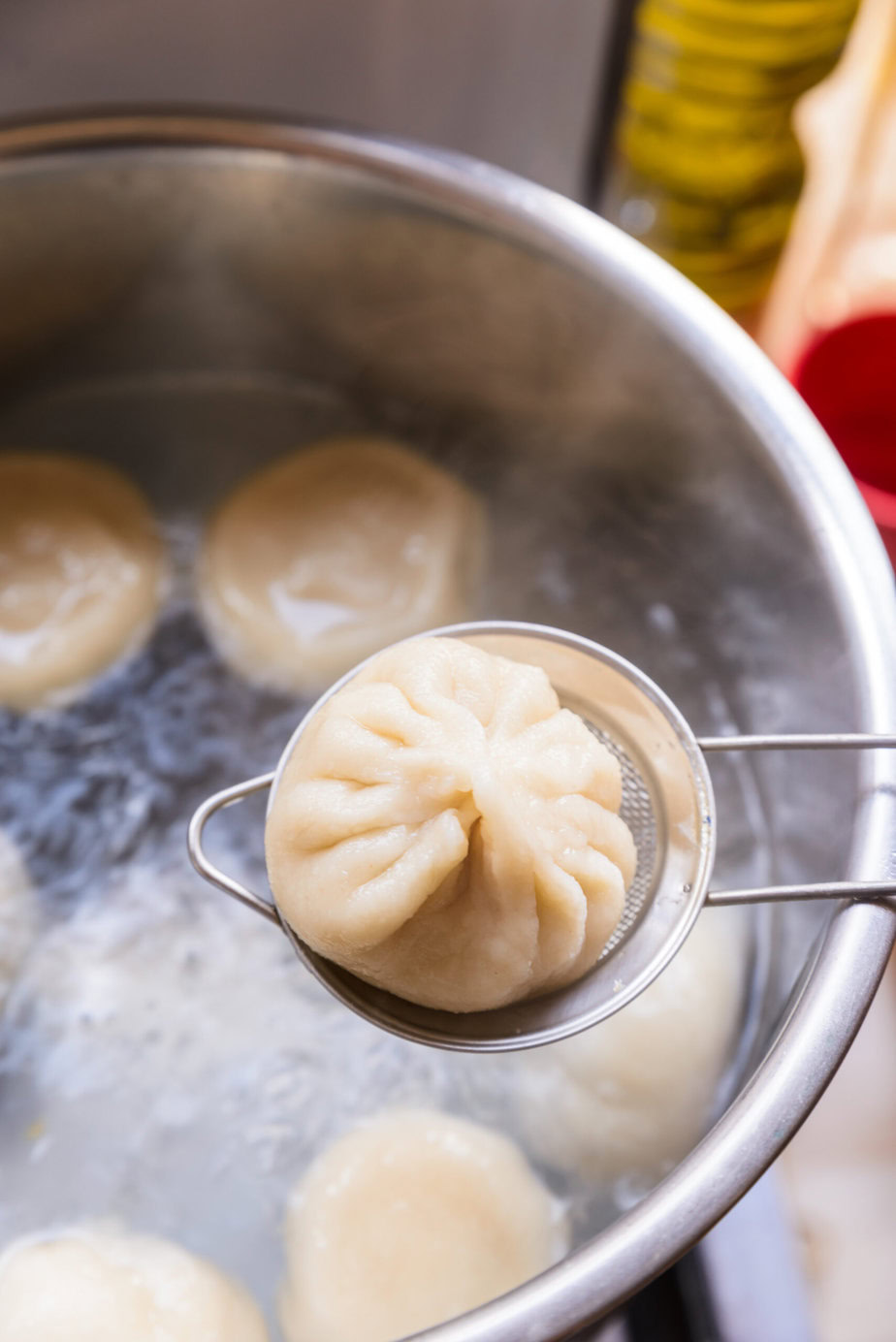
This technique lets the dough rise while a crust forms on the bottom, leaving the inside soft and juicy. The harmony of golden, crunchy crust, pillowy bread, and a juicy, umami-rich filling is pure culinary bliss.
Enjoyed by Shanghai locals since the early 19th century, this morning treat is now within everyone’s reach; you can make and savor it any time of day from the comfort of an american kitchen.
Every summer I look forward to visiting my family in New York so we can head to my favorite restaurant for their version. That restaurant inspired my filling; it is not perfect yet, but I am getting closer!
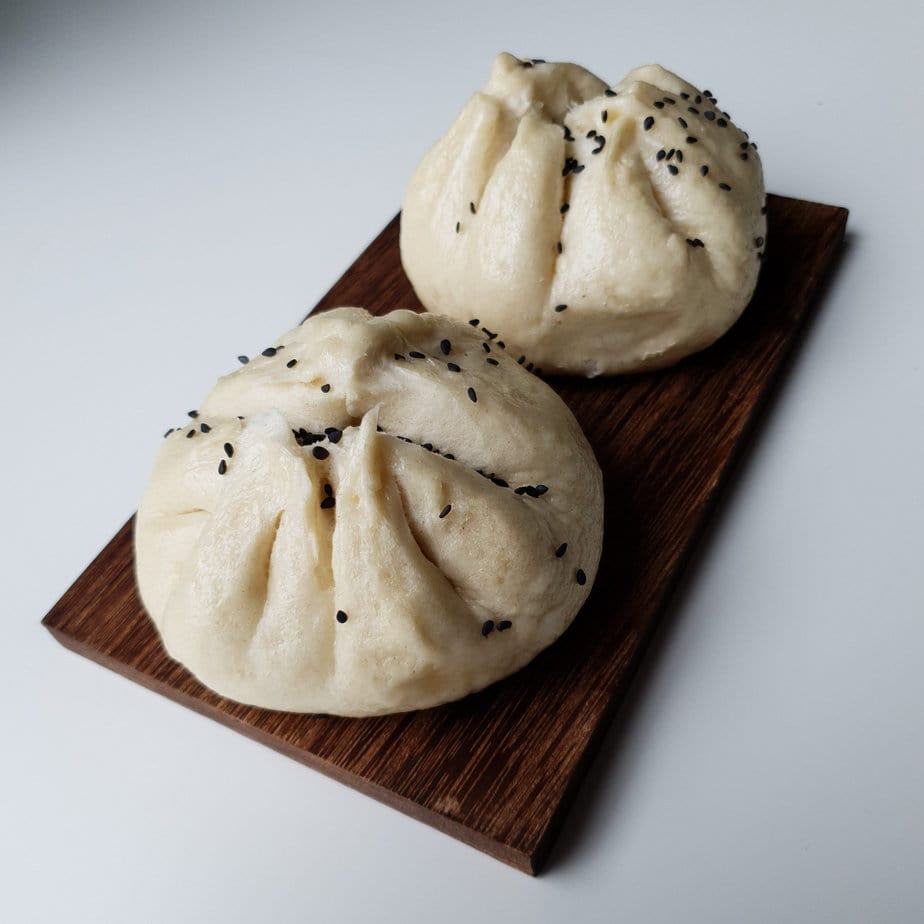
I do not have a blender. How do I make the jelly?
No worries. Use a 1:2 ratio instead, meaning 200ml of water instead of 400ml, and cook for 1 minute 30 seconds.
Tips for making bao
Stick to the stated dough quantities! That said, the exact amount of water can vary with the flour you use. Only practice will tell you how much you really need.
If the dough feels sticky, dust your work surface with cornstarch; it works like a charm!
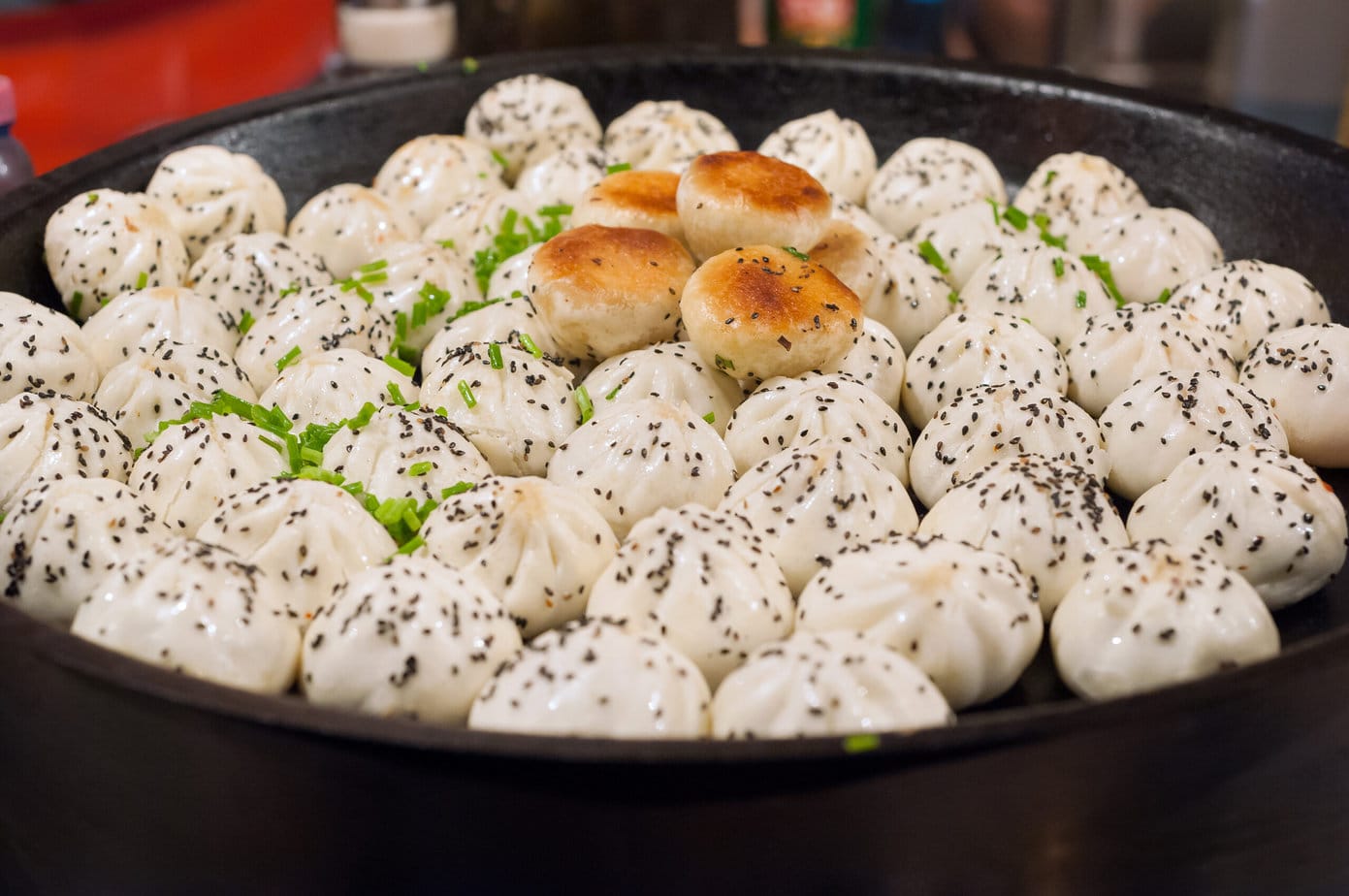
Yes, this recipe is time-consuming, but that only makes the first bite even more satisfying. It is simply divine.
I use almost the same filling for my Chinese dumplings.
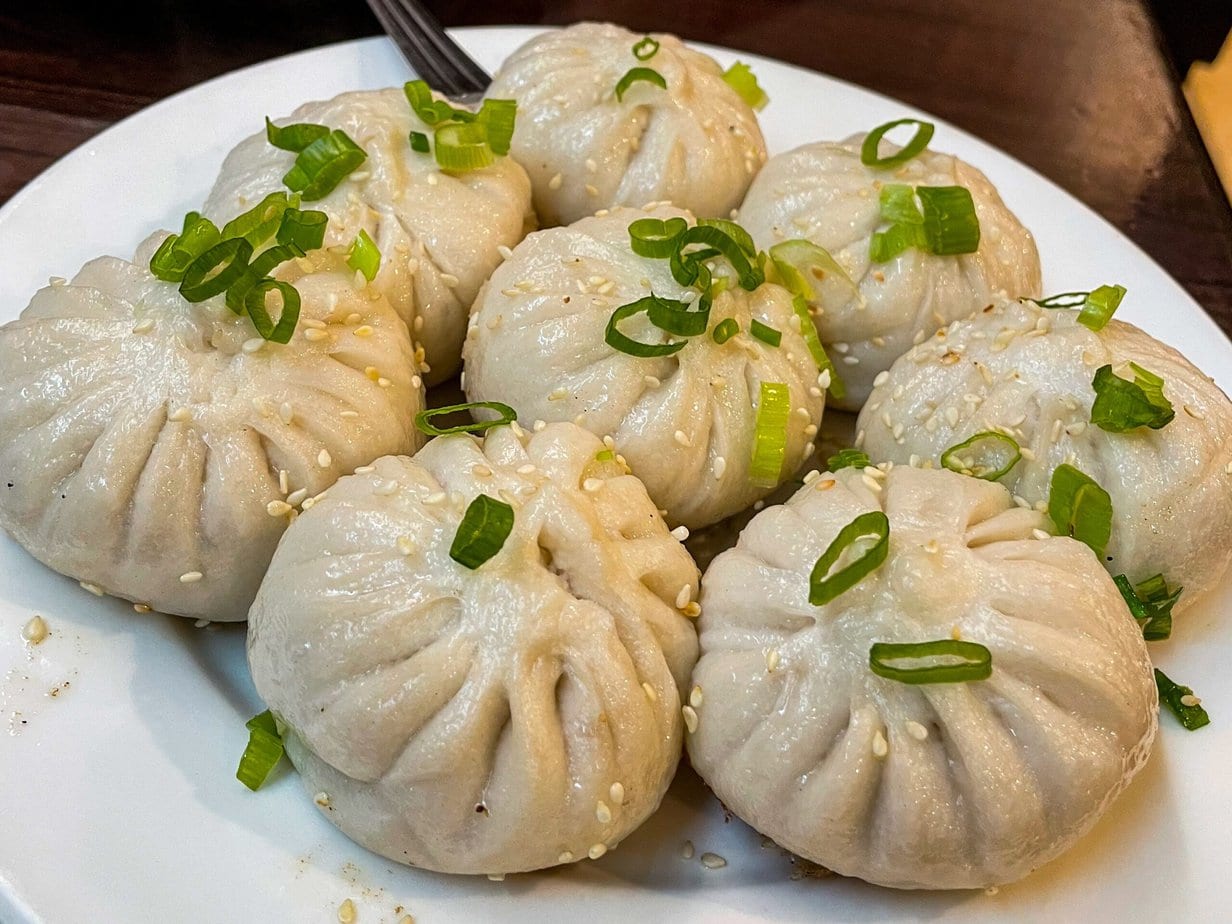
Sheng Jian Bao: Shanghai Pan-Fried Soup Buns
Ingredients
Homemade Pork Aspic
- 100 g pork skin (rind)
- 400 ml water
- 1 small knob of ginger
- 2 scallions
- 2 pinches salt
- 1 pinch MSG (optional)
Dough
- 400 g all-purpose flour
- 2 g instant dry yeast
- 230 ml water
- 1 teaspoon sugar
Filling
- 300 g ground pork
- 200 g pork aspic
- 1 tablespoon chopped green onion
- 1 teaspoon finely minced ginger
- 150 ml water
- 1.5 teaspoon salt
- 2 teaspoon sugar
- 1 tablespoon sesame oil
- 1 tablespoon Shaoxing wine
- 2 teaspoons cornstarch
- 1 teaspoon Sichuan peppercorns
Toppings
- black sesame seeds
- chopped green onion
Instructions
Make the Pork Aspic
- If needed, singe off any stray hairs from the pork skin.100 g pork skin (rind)
- Slice the skin into thin strips.
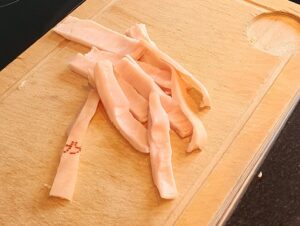
- Combine all the aspic ingredients in a saucepan and simmer over low heat for about 40 minutes.400 ml water, 1 small knob of ginger, 2 scallions, 2 pinches salt, 1 pinch MSG (optional)
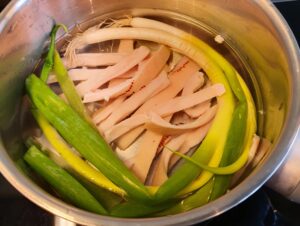
- During cooking, try to keep the skin-to-water ratio close to 1:4. If the liquid reduces too much, top it up with a splash of water.
- When done, discard the scallion and ginger, then transfer the skin and broth to a blender and blitz on high speed.
- Return the mixture to the saucepan, simmer for 3–5 minutes more, then pour it into a glass container.
- Refrigerate the aspic until fully set.
Make the Dough
- In a bowl, whisk the yeast and sugar into the flour.2 g instant dry yeast, 400 g all-purpose flour
- Gradually pour in the water while stirring.230 ml water
- Knead until the dough is smooth, cover with plastic wrap, and let it rest at room temperature for 20–30 minutes.
- When the dough has slightly risen, poke it gently; if the indentation bounces back slowly, it’s ready to go into the fridge.
Make the Filling
- Combine the water, ginger, Sichuan peppercorns, and green onion in a bowl and let them steep for 15 minutes.1 tablespoon chopped green onion, 1 teaspoon finely minced ginger, 150 ml water, 1 teaspoon Sichuan peppercorns
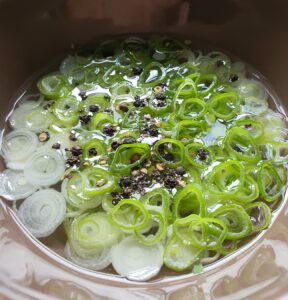
- In a separate large bowl, mix all the remaining filling ingredients except the pork aspic. Stir in one direction for about 3 minutes.1 teaspoon sugar, 300 g ground pork, 1.5 teaspoon salt, 2 teaspoon sugar, 1 tablespoon sesame oil, 1 tablespoon Shaoxing wine, 2 teaspoons cornstarch
- Strain out and discard the aromatics, then gradually drizzle the infused water into the filling while stirring.
- Stir until the mixture turns sticky and almost paste-like.
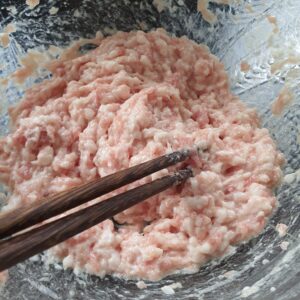
- Remove the chilled pork aspic from the fridge and finely dice it.200 g pork aspic
- Fold the aspic into the meat mixture, then refrigerate for at least 15 minutes.
Shape the Buns
- Lightly flatten the dough with your palm.
- Fold it into a rectangle, then roll it out with a rolling pin.
- Roll the dough into a long log.
- Cut the log into bite-sized pieces, about 13–15 g each, and dust them with flour to prevent sticking.
- Lightly oil a pan and set it aside.
- Press each dough piece flat, then roll out the edges with a rolling pin while rotating the dough so the center stays slightly thicker.
- Spoon a little filling into the center of each wrapper.
- Gather the edges, pleat, and pinch firmly to seal.
- Double-check the seal so no broth can escape.
Cooking
- Set the buns in the hot pan, pleat side down, and pan-fry over medium heat for 1–2 minutes until golden.
- Pour in enough water to come halfway up the sides of the buns.
- Cover, reduce the heat, and steam-fry for 8–10 minutes.
- Once the water has evaporated and you hear a gentle sizzle, turn off the heat and scatter over the chopped green onion and black sesame seeds.chopped green onion, black sesame seeds
- Cover again and let the buns rest for 1 minute before serving.
